Wandering into Stow-on-the-Wold’s Market Square, I felt like I’d just fallen into another era. The weathered stone buildings and the bustle of market life spoke volumes about why this place has drawn people together for centuries.
And then there’s the “Hobbit Door.” Honestly, that quirky, arched doorway at St. Edward’s Church? It really does look like it belongs in a Tolkien tale.
I’d heard whispers about the “Hobbit Door” before, but seeing it in person was something else. The ancient wood, flanked by those two knotted yew trees, just oozed old-world magic.
Stow-on-the-Wold isn’t your run-of-the-mill Cotswold village. It’s got secrets and stories tucked away, waiting for anyone curious enough to poke around.

Exploring the Market Square and stumbling across that door brought all those local legends to life for me. If you’re craving English charm with a dash of storybook fantasy, you’ve got to see Stow-on-the-Wold up close.
Stow-on-the-Wold: A Historic Cotswolds Gem
Perched on a hill, Stow-on-the-Wold has long thrived as a trading post. Its medieval roots and ties to the wool trade run deep, and the architecture reflects that rich past.
Origins and Medieval Heritage
Turns out, Stow-on-the-Wold’s story stretches back to Saxon times. The hilltop gave the town a defensive edge, which mattered during all those old conflicts.
In 1107, the town got a market charter—suddenly, markets and fairs became a regular thing.
The market square still pulses at the heart of Stow. Old inns and houses ring the square, hinting at centuries gone by.
As I wandered, those narrow lanes branching off the square made it easy to imagine what life looked like hundreds of years ago.
Stow-on-the-Wold even played its part in the English Civil War. In 1646, a big battle nearby signaled the end of Royalist resistance in these parts.
Memorials and plaques scattered around town keep those stories alive.
Stow’s Role in the Wool Trade
The Cotswold wool trade really put Stow on the map. Back in the day, sheep farming fueled the local economy.
Markets here buzzed with merchants, traders, and drovers, all dealing in wool.
Old records talk about massive sheep fairs filling the square. The profits from wool built some of the town’s most impressive buildings.
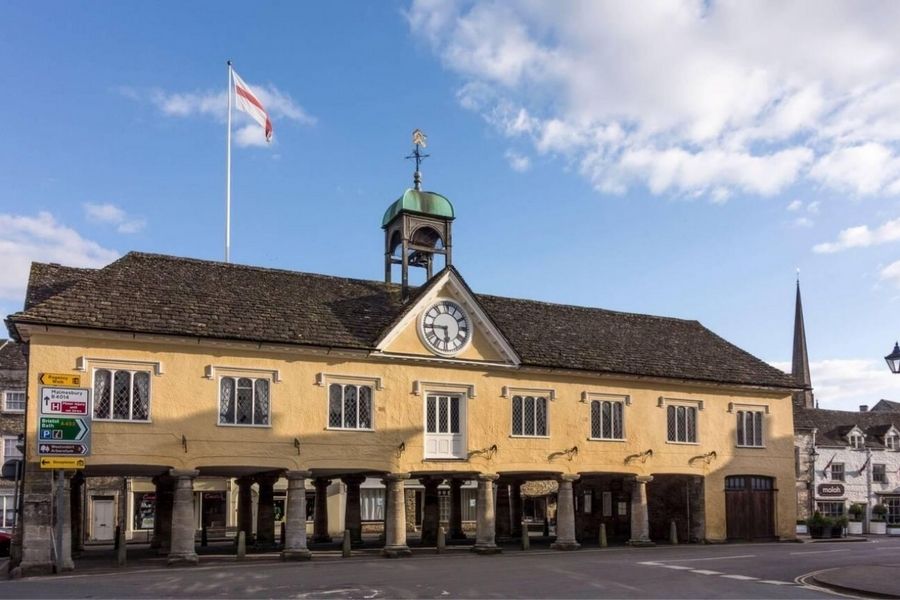
Main facts about the wool trade in Stow:
| Fact | Detail |
|---|---|
| Key product | Wool |
| Main customers | Flemish and Italian merchants |
| Special events | Sheep fairs (annual, large gatherings) |
| Economic impact | Funded church building and local infrastructure |
Architectural Highlights
Stow-on-the-Wold’s buildings really stand out, even among Cotswold towns. Honey-colored limestone houses and shops line the streets.
Around the market square, you’ll spot old inns—some have been here since the 15th century.
St. Edward’s Church is a must-see, especially that famous door framed by yew trees. Locals call it the “Hobbit door,” and you’ll see why.
Other gems include the medieval market cross and the old stocks, where they once punished wrongdoers.
Steeply pitched roofs, stone slates, and arched windows pop up everywhere. I kept spotting unique carvings—proof of the skill local craftsmen had back then.
Walking these old streets, it’s easy to see how wool and medieval history shaped what’s left today.
Discovering the Market Square
Stow-on-the-Wold’s Market Square just draws you in. Its quirky shape, ancient history, and lively vibe make it feel like the town’s living room.
Old stone buildings wrap around the square. At the center, a centuries-old cross stands guard, while shops and events keep things buzzing all year.
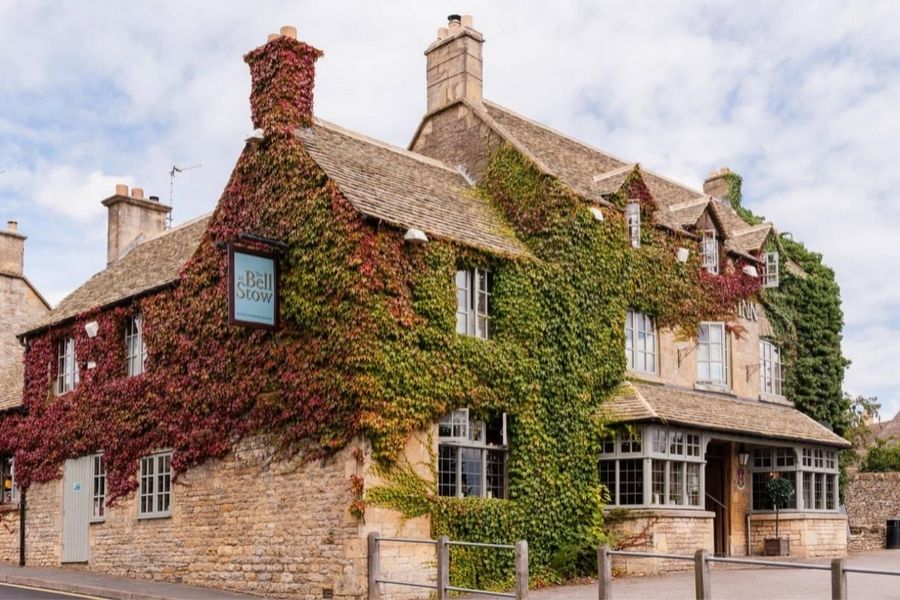
Layout and Distinctive Features
The Market Square isn’t just a big open patch; it’s the beating heart of Stow-on-the-Wold. It’s almost rectangular, though the edges wobble thanks to the way buildings were thrown up ages ago.
Big stone buildings line every side. Many still have their original upper stories and windows.
Since the ground tilts on one side, some doorways perch a few steps above the street. Ancient flagstones cover the square, and ivy creeps along the stone walls.
Key features:
- Cobbled paving that reminds you just how old this place is.
- Narrow entry points from all sorts of side streets.
- Stone benches and planters where you can pause and take it all in.
Even with cars parked along the edges, the square holds onto its old-school charm.
Market Cross and Ancient Inns
Right in the middle, the Market Cross rises up, a tall stone marker built to nudge traders toward fair dealing.
Medieval in style, it sits on a raised base and draws plenty of photos. People gather here, meeting up or just hanging out.
Two of Stow’s oldest inns, The King’s Arms and The Porch House, face the square. The King’s Arms boasts a stone arch and timber beams.
The Porch House claims to be England’s oldest inn, with a sign dating it back to the 900s. Step inside and you’ll find low ceilings, creaky floors, and that unmistakable step-back-in-time vibe.
Both inns welcome travelers and locals with food and drink. On sunny days, tables spill onto the square, adding to the lively scene.
Notable Shops and Local Boutiques
Shops around the square run the gamut, from bakeries to quirky boutiques. I wandered into a little bookstore stuffed with local history and Cotswolds-set novels.
Many stores show off big front windows, displaying homemade fudge, pottery, or gifts. Early mornings, I watched shopkeepers setting out baskets of fresh bread and cheese.
Antique shops tempt with furniture, maps, and odd treasures from long ago.
Art galleries dot the square, too, showing off watercolors and photos of the region. If you’re into crafts, you’ll find handmade jewelry, wool scarves, and other souvenirs that just scream “Cotswolds.”

Common shop types:
- Bookstores
- Antique vendors
- Bakeries and tea shops
- Gift boutiques
Annual Markets and Events
The Market Square isn’t just about shopping. It hosts events that draw crowds from all over.
The monthly farmers’ market brings fresh produce, meats, baked goods, and flowers straight from local farms.
Every autumn, a craft fair pops up, with stalls for jewelry, pottery, and art. Kids love the festive events—during the Christmas market, lights and a tall tree transform the square.
There are classic car shows, open-air concerts, and the occasional food festival. Local groups sometimes take over for charity sales.
Every visit feels a little different, and that’s half the fun.
That Famous “Hobbit Door”: My Tolkien-esque Find
The ancient door at St. Edward’s Church is easily one of Stow-on-the-Wold’s highlights.
People flock here for its odd charm, possible Tolkien ties, and just how photogenic it is.
History of St. Edward’s Church Door
You’ll find the door tucked on the north side of St. Edward’s Church, which dates back to the 11th century.
What makes this doorway so special? It’s the rounded wooden arch hugged by two ancient yew trees.
These trees have stood for centuries, pressing right up against the stone and wood. The effect is, honestly, a bit magical.
The door itself is solid wood, set deep in the old Cotswold stone.
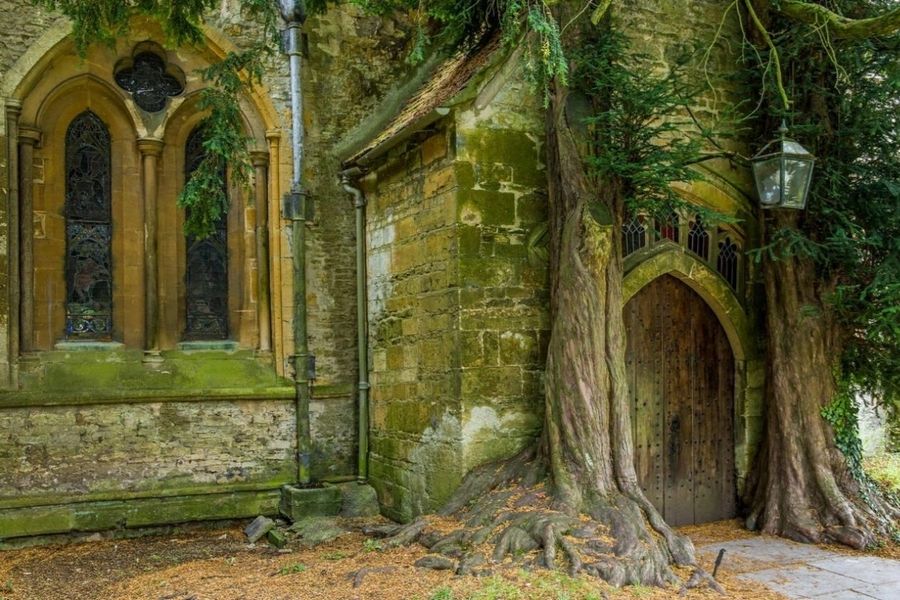
For ages, this was just another church entrance. Now, people come just to snap a photo or soak up the atmosphere.
Tolkien Inspiration and Folklore
Some say J.R.R. Tolkien visited Stow-on-the-Wold and saw this very door. Locals and fans like to think it inspired the Doors of Durin in his books.
The twisted yews and rounded arch do look suspiciously familiar if you’re a Tolkien fan.
No one’s ever proven the connection, but the legend sticks. The “Hobbit Door” nickname has taken on a life of its own.
Whether or not Tolkien ever set foot here, this door fires up the imagination.
Standing in front of it, I half-expected to walk into Middle-earth.
Photographing the Iconic Door
Snapping a photo of St. Edward’s Church door is a rite of passage here. I found early mornings best—the light’s softer and you’re less likely to have folks wandering into your shot.
It’s not always easy to get a clear photo, since the church sits on a quiet but often-busy street.
I stepped back a bit to fit both yew trees and the arch in my frame.
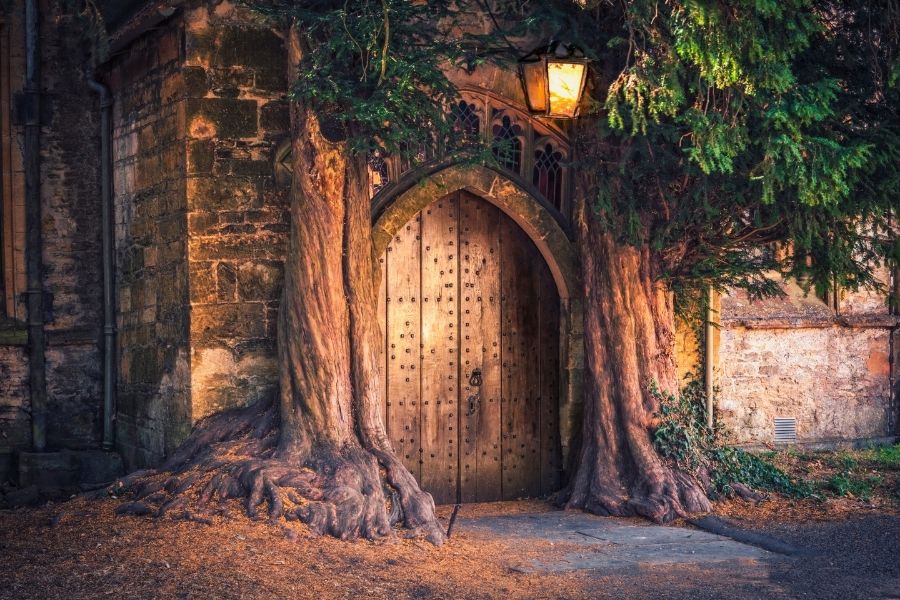
A few tips for the perfect shot:
- Go early or pick a weekday if you want the place to yourself.
- Natural light brings out the true colors.
- Step back to get the full doorway and trees in view.
- Try a few angles—side shots can be surprisingly dramatic.
My own photo from that morning is still one of my favorite travel keepsakes. Sometimes, the smallest details make the biggest memories.
Essential Highlights Around Stow-on-the-Wold
Stow-on-the-Wold offers more than its market square and the “Hobbit Door.” There are winding lanes, cozy places to eat and drink, and easy access to other Cotswold favorites.
Charming Streets and Honey-Colored Stone Cottages
Strolling through Stow’s streets, I kept noticing the creamy-yellow Cotswold stone. When the sun’s out, the whole town glows.
Most buildings date from the 17th or 18th century. Some have arched doorways or ancient wooden windows.
Tiny gardens and old shop signs hang above doors, adding to the charm.
The Market Square sits in the middle of these stone cottages. It’s like walking straight into a painting.
Every corner reveals something—a weathered carving, a sloping roof, a narrow alley. The mix of architecture and color just feels peaceful.
Local Pubs and Tea Rooms
At the center, pubs and tea rooms invite you in. Each spot has its own flavor, but all are warm and welcoming.
The King’s Arms and The Porch House serve up hearty meals and classic ales. Inside, you’ll find stone fireplaces and old beams.
For cream teas, I ducked into a tea room on Sheep Street. Think scones piled with clotted cream and jam, plus endless teas and cakes.
Some places also offer sandwiches and light lunches.
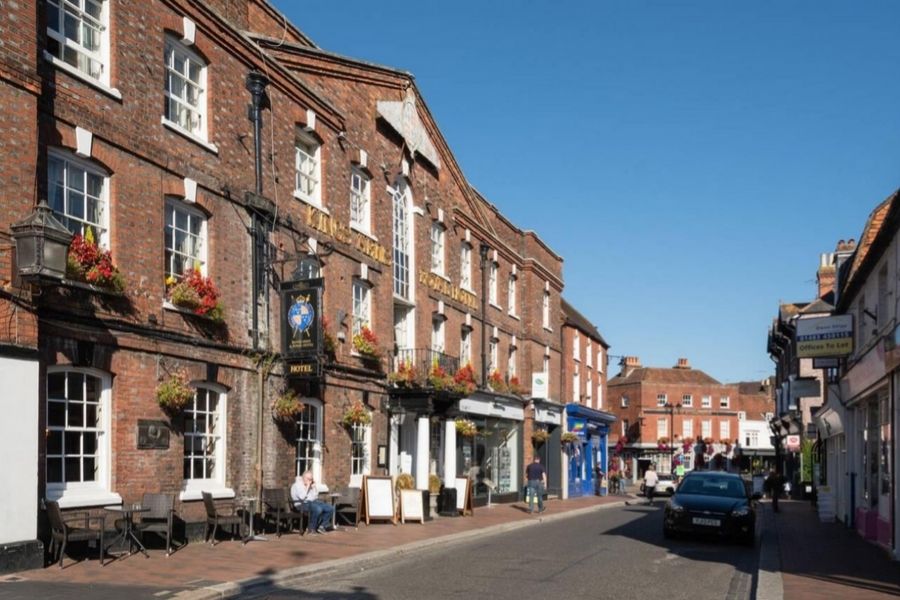
Most menus lean on local ingredients, and plenty of dishes have been served here for ages.
The staff always seemed happy to chat about what’s best to try or share a bit of town history. It made every stop feel personal.
Nearby Attractions in the Cotswolds
Stow-on-the-Wold sits close to other Cotswold highlights. I hopped over to Bourton-on-the-Water, famous for its little bridges and the model village.
Lower Slaughter, with its stone cottages and water mill, is just a short drive.
If gardens are your thing, Hidcote Manor Garden is about 20 minutes away.
Walking trails snake out from Stow, winding through fields and woods. The views stretch for miles.
History buffs can check out ancient churches, like St. Edward’s (don’t miss the “Hobbit Door”), and local museums that dig into the area’s past.
Tips for Exploring Stow-on-the-Wold
A little planning goes a long way in Stow-on-the-Wold. I found that timing, knowing the best routes, and sorting out parking can turn your day from hectic to laid-back.
Best Times to Visit
Spring and summer always seem to draw the biggest crowds to town. The warmer weather just brings people out in droves. I really like late spring—May, especially—when wildflowers bloom and the crowds thin out a bit.
Early autumn is honestly lovely too. The leaves start to change, and the streets feel quieter.
Weekdays usually feel way more peaceful than weekends. I try to get there before 10 a.m. if I can. Shops open around 9:30, and there’s this gentle energy before everything gets busy.
Market days pop up every second Thursday. The place buzzes with locals selling food and crafts, so if I’m in the mood for a livelier scene, I’ll go then.
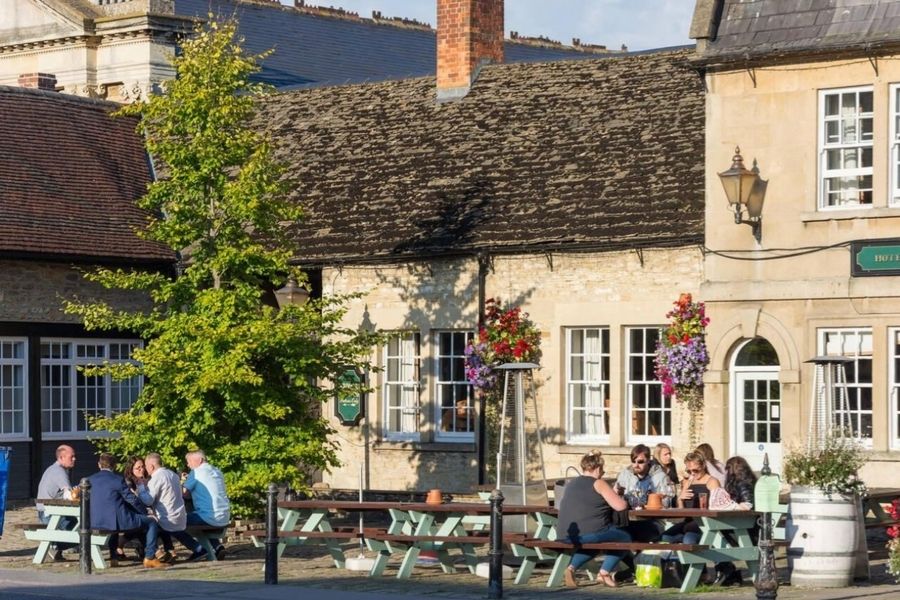
I steer clear of major holidays—parking turns into a headache, and cafés get packed. Evenings slow down a lot. That’s when I love wandering Market Square with my camera; the light softens, and hardly anyone’s around.
Walking Routes and Touring Advice
I always kick things off at Market Square. It’s really the center of everything.
From there, I wander toward the “Hobbit Door” at St. Edward’s Church. Most big sights have signs, but a few of the best little alleys don’t, so I keep a map just in case.
Here’s the route I usually take:
- Market Square: I start by checking out the old stocks and poking into the shops.
- St. Edward’s Church: That yew-framed door is a must-see.
- Sheep Street: Great spot for antiques and grabbing a coffee.
- Church Street: It’s quieter here, with some beautiful old homes.
- Back to the Square: I usually finish up with tea and something sweet from a bakery.
Comfy shoes are a must—the cobbled streets can be rough on your feet. The walks aren’t long, but I like to pause for photos or just to take it all in. Some streets get pretty steep, especially in summer, so I never forget to bring water.
Where to Park and Stay
Stow’s parking situation isn’t too bad, but you’ll want to plan ahead. I usually grab a spot at the long-stay car park by Tesco on Fosse Way. It’s just a five-minute stroll to Market Square, and there’s almost always space.
Short-stay parking sits closer to the center, though it tends to fill up quickly—especially on weekends or market days. Honestly, if you don’t arrive early, you might have to circle a bit.

Here’s a quick table comparing the main parking options:
| Location | Free/Paid | Distance to Square |
|---|---|---|
| Fosse Way Long-Stay | Paid | 5 min walk |
| Market Square Short-Stay | Paid | 1-2 min walk |
| Tesco Car Park | Free 2 hrs | 5 min walk |
If you’re staying overnight, the historic inns right in the center have a certain charm you can’t beat. I’ve found a handful of small B&Bs with genuinely friendly owners—nothing beats a warm welcome after a long day.
Booking ahead, especially in spring or summer, has saved me from ending up on the outskirts. Some guesthouses offer parking for guests, but I always double-check before I show up, just in case.

